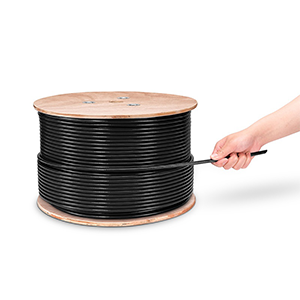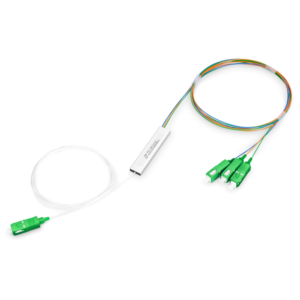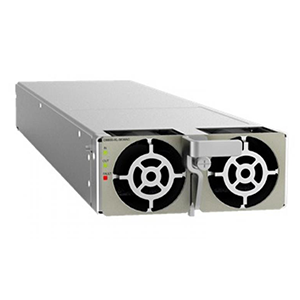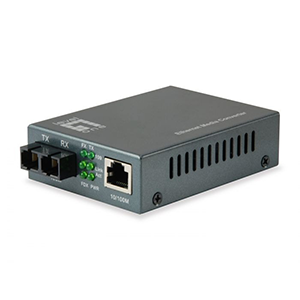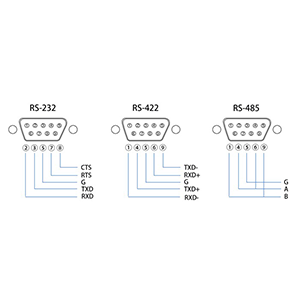Hello everyone! Today I want to discuss two types of high-speed network cables with you – Cat6 and Cat7. In the context of today’s increasing demands on modern networks, choosing the right high-speed network cable is crucial for smooth data transmission. In this article, I will compare and explain the differences between Cat6 and Cat7, as well as their respective advantages and disadvantages, to help you make an informed choice.
High-Speed Network Cable Overview
High-speed network cables are a critical component in modern networks for transmitting high-speed data. They carry the data flow in the network and connect computers, servers, routers, switches and other equipment, allowing information to be transmitted quickly and reliably.
Basic principle: High-speed network cables realize data transmission by transmitting electrical signals or optical signals. Cables contain multiple wires or fibers inside that are braided and shielded to reduce interference and signal loss. The transmission performance of a cable is affected by multiple factors, including cable material, wire shielding, transmission frequency, etc.
High-speed network cables are important in modern networking needs:
High-speed data transmission: As network applications and data demands increase, high-speed network cables can support higher data transmission speeds. They are capable of meeting bandwidth-hungry applications such as large-scale data transfer, high-definition video streaming, cloud computing and virtualization.
Low latency and high stability: High-speed network cables can provide low-latency data transmission, ensuring the efficiency of real-time applications. At the same time, they have high stability and can ensure reliable transmission of data and reduce packet loss and data errors.
Network expansion and upgrades: High-speed network cables can meet the needs of network expansion and upgrades. They provide greater bandwidth and higher transmission speeds, allowing networks to cope with growing data traffic and the requirements of emerging technologies.
Different types of high-speed network cables:
Cat5e (Category 5e): Cat5e cable is an earlier high-speed network cable that supports Gigabit Ethernet transmission speeds. It is an improved version of Cat5 cable that provides better performance by increasing the transmission frequency and reducing interference.
Cat6 (Category 6): Cat6 cable is a higher performance high-speed network cable that supports 10 Gigabit Ethernet (10 Gigabit Ethernet) transmission speeds. It further improves the transmission frequency and anti-interference ability based on Cat5e, and is suitable for large-scale data centers and enterprise networks.
Cat7 (Category 7): Cat7 cable is a high-performance, high-speed network cable that supports higher transmission frequencies and lower signal loss. It adopts a double-shielded structure (S/FTP), which can provide better anti-interference performance and more stable data transmission, and is suitable for high-density data centers and professional network applications.
High-speed network cables play a vital role in modern networks. They can support high-speed data transmission, low latency, and high stability, and provide the necessary foundation for network expansion and upgrades. Cat6 and Cat7 are two commonly used types of high-speed network cables. Their characteristics and application scenarios can be further discussed later.
What is Cat6 network cable
Cat6 network cable is a high-performance network cable with excellent transmission capabilities and signal quality, suitable for home and commercial environments. The following is a detailed introduction to Cat6 network cables:
Features and Specifications:
- Cat6 network cable uses a four-pair twisted wire (UTP) structure, and each pair of wires is independently shielded to reduce interference and crosstalk.
- It supports transmission frequencies up to 250 MHz, providing greater bandwidth and transmission capacity compared to the 100 MHz of Cat5e cable.
- Cat6 cables typically use RJ-45 connectors and are compatible with most network devices.
Transmission capabilities and performance:
- Cat6 network cable can support Gigabit Ethernet transmission rates, up to 1000 Mbps. This enables it to handle large data transfers, including high-definition video streaming, large file transfers, and real-time applications.
- It also supports 10 Gigabit Ethernet transmission rates, but requires more stringent electrical parameter requirements over longer distances.
- The transmission distance of Cat6 cable can reach 100 meters under Gigabit Ethernet.
Application scenarios and advantages:
- Home environment: Cat6 network cables are becoming more and more common in home networks. It can be used to connect home offices, entertainment systems, network cameras, smart home devices, and more. Cat6’s high-speed transmission capabilities can meet the needs of large amounts of data transmission within the home, such as high-definition video streaming, online gaming, and file sharing.
- Business environment: In business environments, Cat6 network cables are widely used in offices, schools, medical institutions, and data centers. It can meet large-scale data transmission and high-performance network requirements, and supports applications such as high-speed Internet access, remote collaboration, video conferencing, and large-scale data storage.
- Advantages: Compared with earlier Cat5e cables, Cat6 network cables provide higher transmission frequencies and greater bandwidth, making data transmission faster and more reliable. It has low transmission loss and good anti-interference ability, and can maintain signal stability during long-distance transmission. Additionally, Cat6 cables are relatively low cost and are more suitable for general networking applications than higher specification cables such as Cat6a and Cat7.
In general, Cat6 network cable is a high-performance network cable with high transmission capacity and bandwidth. It is widely used in home and business environments and can meet large-scale data transmission and high-speed network needs, providing fast and reliable data transmission and network connections.
What is Cat7 network cable
Cat7 network cable is a high-performance network cable that is widely used in scenarios that require high-speed data transmission and strong anti-interference capabilities. The following is a detailed introduction to Cat7 network cables:
Features and Specifications:
- Cat7 network cable uses a four-pair twisted wire (STP) structure. Each pair of wires has independent shielding and an overall shielding layer to minimize external interference.
- It supports transmission frequencies up to 600 MHz, providing greater bandwidth and transmission capacity compared to the 250 MHz of Cat6 cable.
- Cat7 cables usually use GG45 or Tera connectors, which are compatible with standard RJ-45 connectors.
Transmission capabilities and performance:
- Cat7 network cables can support 10 Gigabit Ethernet transmission rates up to 10,000 Mbps. This enables it to handle high-speed data transfers, including large file transfers, video streaming, and real-time applications.
- It also supports higher transmission rates such as 40 Gigabit Ethernet and 100 Gigabit Ethernet, but over shorter distances.
- The transmission distance of Cat7 cable can reach 100 meters under 10 Gigabit Ethernet.
Advantages of high-speed data transmission and anti-interference capabilities:
- High-speed data transmission: Cat7 network cables enable data to be transmitted at faster speeds by providing greater bandwidth and higher transmission frequencies. This makes it ideal for scenarios that require large amounts of data transmission, such as data centers, connections between servers, and high-density network environments.
- Strong anti-interference ability: The multi-layer shielding structure of Cat7 cable gives it excellent anti-interference ability. It can effectively reduce external electromagnetic interference, crosstalk and signal loss, maintain signal stability and reliable data transmission. This makes Cat7 cable excellent in environments that require a high degree of reliability and stability, such as financial institutions, medical facilities, and industrial control systems.
In general, Cat7 network cable is a high-performance network cable with excellent transmission capabilities and anti-interference capabilities. It supports high-speed data transmission and can meet the needs of large-scale data centers and high-density network environments. The multi-layer shielding structure of Cat7 cable can effectively reduce interference and maintain signal stability, giving it an advantage in scenarios with high reliability requirements. However, due to its higher specifications and cost, Cat7 cable is mainly used in professional network environments and specific high-performance demand scenarios.
What are the differences between Cat6 vs Cat7
Cat6 and Cat7 are two common network cable standards. They have some differences in transmission rate, bandwidth and anti-interference performance. Here are the main differences and comparisons between Cat6 and Cat7:
- Transmission rate and bandwidth:
- Cat6: Cat6 network cable supports transmission rates up to 1000 Mbps (Gigabit Ethernet) and is suitable for most home and business network needs. Its transmission frequency is 250 MHz, providing a larger bandwidth.
Cat7: Cat7 network cables support transmission rates up to 10,000 Mbps (10 Gigabit Ethernet) and are suitable for high-speed data transmission and professional network environments. Its transmission frequency is 600 MHz, providing greater bandwidth.
Anti-interference performance:
- Cat6: Cat6 cable adopts UTP (unshielded twisted pair) structure. Each pair of wires has independent shielding, which can reduce a certain degree of interference and crosstalk.
Cat7: Cat7 cable adopts STP (shielded twisted pair) structure. Each pair of wires has independent shielding and an overall shielding layer, which can provide stronger anti-interference performance and reduce the impact of external electromagnetic interference. .
Improvements and upgrades:
- Cat7 improvements: Compared with Cat6, Cat7 cable adopts stricter specifications and higher transmission frequency to support faster transmission rates and larger bandwidth. It also introduces an additional shielding layer, providing stronger anti-interference performance and suitable for high-density and demanding network environments.
The upgrade of Cat7 compared to Cat6: Cat7 cable has been significantly improved in terms of transmission rate, bandwidth and anti-interference performance. It can meet higher-speed data transmission needs while providing more reliable signal transmission and a more stable network connection.
Applicability and cost-effectiveness considerations:
- Cat6 Suitability: Cat6 network cable is suitable for most home and business network applications. It provides sufficient transmission rate and bandwidth to meet general data transmission needs, while having a high cost performance.
- Cat7 applicability: Cat7 network cable is suitable for scenarios with high requirements for high-speed data transmission and anti-interference performance. It is suitable for data centers, server-to-server connections, and professional network environments that require high reliability and stability. However, due to its higher specifications and cost, Cat7 cable is more suitable than Cat6 for specific high-performance demand scenarios.
In general, there are significant differences between Cat6 and Cat7 network cables in terms of transmission rate, bandwidth and anti-interference performance. Cat7 has been upgraded and improved compared to Cat6, providing higher transmission rate, larger bandwidth and stronger anti-interference performance. Selecting the appropriate cable standard should be considered based on specific network needs and budget to balance performance requirements and cost-effectiveness. For general home and business network applications, Cat6 is often an affordable and adequate choice, while for high-speed data transmission and professional network environments, Cat7 provides a higher performance solution.
How to choose high-speed network cable
Selecting the right high-speed network cable requires consideration of several factors, including network needs, budget, and future expansion. Here are some suggestions and considerations:
- Network requirements:
- Transfer rate and bandwidth requirements: First determine how fast a transfer rate and how much bandwidth your network requires. If you need to handle heavy data transfers, HD video streaming, or other high-bandwidth applications, Cat7 may be a better choice due to its higher transfer rates and bandwidth.
Anti-interference performance: If your network environment has strong electromagnetic interference or requires higher anti-interference capabilities, such as in an industrial environment or high-density network, then Cat7’s shielding structure can provide better Signal stability and anti-interference performance.
Budget:
Cost Factor: Cat7 cable is generally more expensive relative to Cat6 cable, mainly due to its higher specifications and more powerful performance. Therefore, you need to consider budget constraints and weigh the balance between performance needs and costs. If your network needs can be met by Cat6 and your budget is limited, it may be more cost-effective to choose Cat6.
Future scalability:
- Long-term planning: You may need to leave some room for future network expansion and upgrades. If you anticipate needing updates in the near futureHigh transmission rate and bandwidth, or your network environment may become more complex, then choosing Cat7 can provide you with greater scalability.
Consider the above factors comprehensively and make a reasonable choice based on specific application scenarios and requirements:
- For general home and business network needs, if your transmission rate and bandwidth requirements are not particularly high and your budget is limited, Cat6 is an affordable choice.
- For professional network environments that require high-speed data transmission and anti-interference performance, or if the budget allows, choosing Cat7 can provide higher performance and reliability.
- If you are planning long-term network expansion and upgrades, or your network environment has higher requirements for anti-interference performance, then choosing Cat7 can provide greater scalability and anti-interference capabilities.
Summary
Cat6 and Cat7, as high-speed network cables, have different characteristics and application ranges. Cat6 has become the first choice in home and commercial environments due to its good transmission capabilities and performance, while Cat7 has a higher level of advantages in high-speed data transmission and anti-interference capabilities.
Selecting the right high-speed network cable is critical based on your network needs, budget, and future expansion. We offer many types of high-speed network cables to meet various needs and application scenarios. If you have more questions about Cat6 and Cat7 or need more details, please feel free to contact us.
Cat6 And Cat7 Network Cable FAQ
The main difference between Cat 6 and Cat 7 cables lies in their performance specifications. Cat 7 cables are designed to support higher bandwidths and have stricter crosstalk and noise cancellation requirements compared to Cat 6 cables.
Cat 7 cables have the potential to support higher data transfer rates compared to Cat 6 cables. Cat 7 can handle up to 10 Gbps (Gigabits per second) at a maximum distance of 100 meters, while Cat 6 is typically limited to 1 Gbps.
Both Cat 6 and Cat 7 cables can support a maximum cable length of 100 meters (328 feet) for Ethernet networking.
Cat 6 and Cat 7 cables have different specifications and performance capabilities. While they may have the same physical connectors, it is recommended to use the appropriate cable category for specific requirements to ensure desired performance and compatibility.
Yes, Cat 6 and Cat 7 cables are backward compatible with older cable categories such as Cat 5e and Cat 5. They can be used in installations where backward compatibility is required.
Cat 6 cables are available in both shielded (STP) and unshielded (UTP) variants, while Cat 7 cables are typically shielded (STP). The shielding helps to reduce electromagnetic interference (EMI) and crosstalk.
Cat 6 cables are commonly used in applications such as local area networks (LANs), home networks, office networks, and data centers where Gigabit Ethernet connectivity is required.
Cat 7 cables are primarily used in data centers, high-performance computing environments, server farms, and other applications requiring higher data transfer rates and better noise immunity.
Both Cat 6 and Cat 7 cables can support Power over Ethernet (PoE) applications. However, it is important to consider the power requirements and limitations defined by the specific PoE standards.
Cat 6 cables are more widely available and cost-effective compared to Cat 7 cables due to the higher complexity and performance requirements of Cat 7. The cost difference between the two categories can vary depending on factors such as brand, length, and shielding options.

